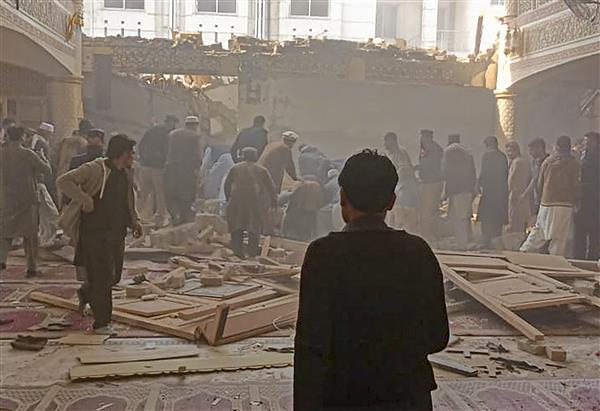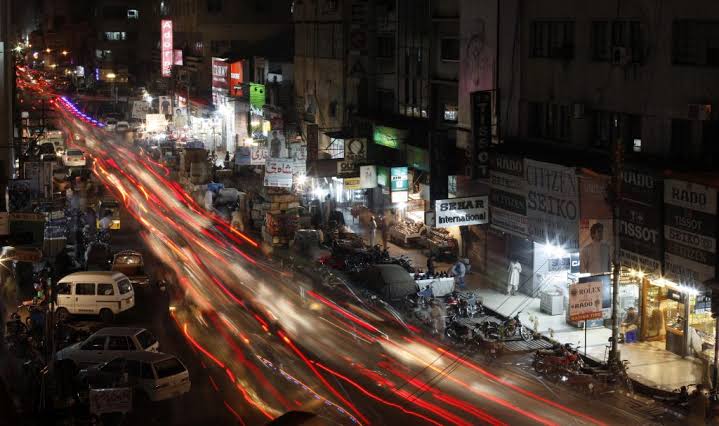The Menace Of Suicide Bombings In Pakistan

An official, identified as Additional Station House Officer (SHO) Adnan Afridi was killed in a suicide blast inside a mosque in the Jamrud area of Khyber district of the restive province of Khyber Pakhtunkhwa (KP) on July 25. Sadly, he was part of the police party that was chasing the suicide bomber and was killed in the blast. The police party had reached the area after receiving information about the presence of suspicious people there.1
The mosque that was damaged in the explosion is located near Oba Pull in the Ali Masjid area of Jamrud. Ali Masjid is a small settlement around 15 km from Jamrud city and 45 km from Peshawar. It lies on the international trade route between Pakistan and Afghanistan, linking Peshawar with the border town of Landi Kotal and then to the Torkham Border Crossing.2
According to a report released by Pakistan Institute for Conflict and Security Studies (PICSS), the first half of 2023, witnessed firm and also disturbing rise in terror and suicide attacks claiming the lives of 389 people across Pakistan. A concerning surge in suicide attacks has also been observed during the first half of 2023, with 13 such attacks resulting in 142 deaths and 309 injuries. In comparison, only 5 suicide attacks were reported during the corresponding period of 2022, causing 77 deaths and 225 injuries.3 However, the July 25 attack is second prominent terror attack reported from Khyber district in less than a week. Earlier on July 20, two suicide bombers were intercepted by police at the entrance of the tehsil headquarters complex and police station adjacent to Bara bazaar in Khyber district. Police said they engaged the bombers in a gun battle, which left one of the attackers dead, while the other blew himself up. A portion of the building collapsed owing to the impact of the explosion. Three policemen were also killed.4
Pakistan’s history and culture have been marred by a troubling pattern of violence, with suicide attacks and bombings as prominent features. A shocking incident in January 2023 saw a devastating suicide attack in a Peshawar mosque located in Police Lines, claiming the lives of approximately 60 people, including police personnel. The TTP and other extremist groups persistently operate, perpetrating major attacks like the ruthless March 2016 bombing in a Lahore park during Easter festivities, which resulted in the deaths of nearly 70 people and injured over 300. Similarly, the August 2016 suicide bombing at a Quetta hospital targeted lawyers, leading to the loss of nearly 75 lives and injuring at least 100.5
Although during the previous years, suicide attacks in Pakistan have predominantly been carried out by organizations affiliated with Al-Qaeda, such as Tehreek-e-Taliban Pakistan (TTP), Jaish-e-Muhammad (JeM), Jundullah, Sipah-e-Sahaba Pakistan (SSP), Islamic Movement of Uzbekistan (IMU), and Lashkar-e-Jhangvi (LeJ). However, the first-ever suicide bombing in Pakistan was executed by the Egyptian Islamic Jihad on November 19, 1995, using a Vehicle-Bound Suicide Attack (VBSA) targeting the Egyptian Embassy in Islamabad. Regrettably, 19 lives were lost, and 80 others were wounded in that attack.6 The violent trend persisted after the US-led War on Terrorism began in 2002, resulting in over 3,719 fatalities and 9,464 injuries from nearly 257 suicide bombings within Pakistan until July 1, 2010.7 The origin and evolution of suicide bombing practices present a captivating interplay of cultures and influences. The idea of “Istihadiyeen” (Suicidal attackers) as heroic martyr-fighters originated from the Pashtuns, who believed that those who carried out suicidal attacks in defense of their faith held great importance. The Taliban culture did not completely adhere to Pashtunwali code and subsequently it started to follow the suicidal bombing practice. In a striking turn of events, the Taliban embraced what was once condemned as an act of cowardice. Curiously, suicide attacks in Pakistan gained prevalence between 2003 and 2005, primarily driven by the anti-Shi’ite Taliban in Punjab, who honed their proficiency through Al-Qaeda’s influence in Afghanistan. Remarkably, it was the Afghan Taliban who imparted this sinister craft to their Pashtun counterparts in Pakistan. However, it’s worth noting that the Afghan Taliban themselves acquired this deadly tactic from the Al-Qaeda’s exploits in Iraq.8 Thus, the intricate chain of knowledge and skill transmission in suicide bombing stretches from the Middle East to mainland Pakistan have layers of intrigue to this tragic phenomenon.
Suicide bombing in Pakistan is typically executed in two ways. Either an individual carries the explosives attached to body, for instance by wearing suicide vest, to target, or otherwise, by ramming explosive laden vehicle into the target. These are known as Person Borne Improvised Explosive Devices (PBIEDs) and Vehicle Borne Improvised Explosive Devices (VBIEDs). There are variations in the impacts of these methods as well. In the case of Pakistan Person Borne Improvised Explosive Device (PBIEDs) were more lethal as compared to Vehicle Borne Explosive Devices (VBIEDs). 51 percent of all attacks were perpetrated through PBIEDs causing 55 percent of casualties whereas 45 percent of casualties were caused by attacks with VBIEDS.9 The Pakistani suicide bombers have few characteristic features. Pakistani potential suicide attackers are in divergence with the Western or even the Arab attackers. The terrorist organizations and groups in Pakistan try to focus such individuals which are primarily from the poor, deprived and unfortunate background, least educated or even not educated at all, most of the times students from Madrasa (religious seminary) is an ideal choice, or even such individuals who happily offer to sacrifice their lives since their loved ones were victims of a local or foreign military strike. The basic motivation of such individuals is to seek vengeance from the state for their loss. The American drone strikes especially in erstwhile FATA gathered much ‘help’ and ‘compassion’ for terrorists and helped in recruiting suicidal attackers.10 Also, the Jamiat Islami in Pakistan, move young suicide bomber’s families into nicer homes or provide them with first access to better jobs. Therefore, their sacrifice is depicted to the children as a means to be self-sacrificing and raise their family’s lot in life. These offers predominantly resonate with children growing up in war zones and refugee camps, who can envisage no other way to help their families out of their fate.11
Remarkably, the motivations for suicide attacks are not so different in many ways from the motivations for other types of terrorism, including attention to a cause, personal notoriety, anger, revenge and revenge against a professed injustice. The videos and the ‘will letters’ of the suicide attackers, which are very common and easily available in South and North Waziristan in KP show that the suicide attackers are very much clear in their decisions, politically and religiously brainwashed, and motivated. In the early years, when the Taliban had decided to use suicide attacks as method of violence, they had the very stringent criteria to be a suicide attacker. To achieve the moral and Shariah demands it was obligatory for suicide attackers that they should be unmarried, will have brothers or patronage who will look after their families after their death. If they will not have the brother or patronage then it was their responsibility to arrange guarantee of someone who took charge for taking care of his family. Taliban provided the recompence to suicide attacker family as well.12
The ecosystem of terrorism in Pakistan poses a daunting challenge. The surge in suicide attacks and the mounting danger due to the Taliban regime in Afghanistan paint a murky future on the nation’s security and stability as well. The tragic incidents in various regions of the country underscore the urgent need for comprehensive counterterrorism strategies and preventive measures. Understanding the intricate chain of influences and transmission of knowledge in suicide bombing sheds light on the multifaceted nature of this phenomenon. Tackling the motivations behind suicide attacks, especially in vulnerable communities, is crucial for dismantling the network of terrorism. The impact of suicide attackers is deeply entrenched in society, making it challenging to break free from this deadly psychosis. As Pakistan grapples with the ongoing threat, the path to peace remains complex and arduous.






